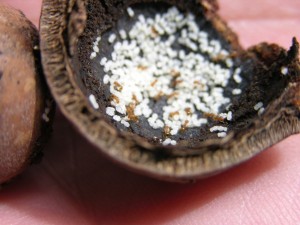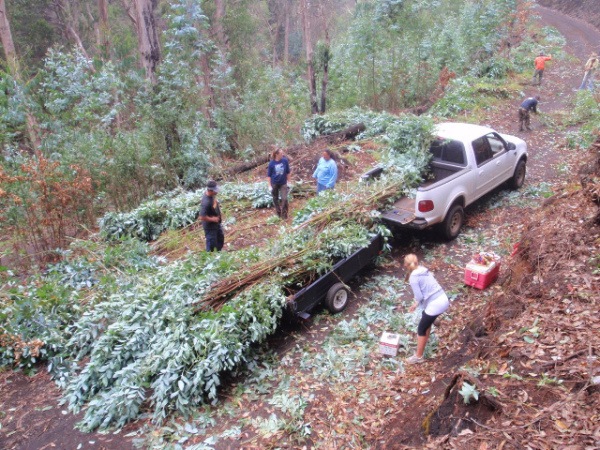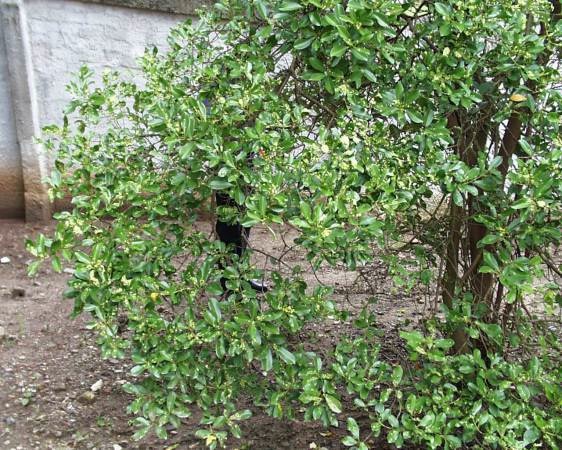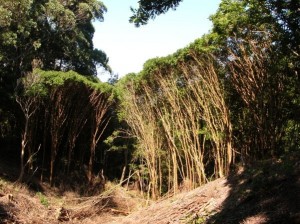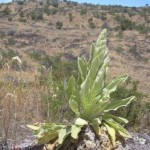
MISC staff assist the Hawaii Department of Agriculture surveying for little fire ants. MISC file photo.
Little fire ants (LFA) are devastating communities across the Pacific. Passive and deceitfully small in size, these South American imports pose a grave threat to Hawaii. They can deliver a painful sting, blind animals, and reduce biodiversity.
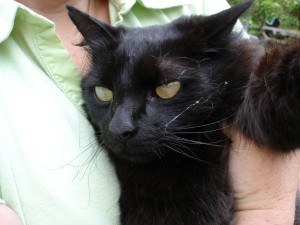
A cat on the big island blinded from a fungal infection, the likely outcome of little fire ant stings. MISC file photo.
You can help! We’re conducting a neighborhood survey for the LFA Saturday, October 22, from 8:30 am to 12pm. The little fire ant has been found once on Maui, and because the infestation was small it was eradicated. However, the source of the infestation has never been determined and there’s a good chance LFA are somewhere else on Maui. Your help in getting the word out is greatly appreciated!
Please contact us at miscpr@hawaii.edu by October 19th if you are interested in participating. We’ll contact you with more details.
More about the little fire ant…
If LFA were to become established in Hawaii, they would become the state’s most devastating pest. Throughout the Pacific, LFA has overwhelmed communities. If we do not stop the spread of the little fire ant we stand to lose much of our agricultural industry. We will lose our ability to grow our own food, enjoy our yards, and hike through the forest. Ground nesting seabirds and sea turtle hatchlings will be attacked, along with many of our rare insect species. Once little fire ant is established, there is little hope of eradication. Learn more through the postings on this blog under the category invasive animals.
I thought we already had fire ants here?
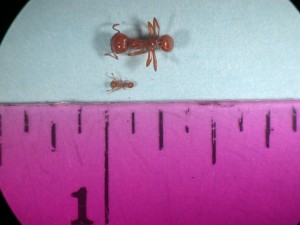
Don’t confuse the little fire ant with the much larger and widespread tropical fire ant (above). Photo courtesy of HDOA
Yes, the tropical fire ant, Solenopsis geminata, has been in Hawaii since the 1940s. While the tropical fire ant is a serious and unpleasant pest, it pales in comparison to the little fire ant. LFA are ½ the size of the tropical fire ant, only as long as a penny is thick. LFA typically sting people on their necks as they rain down from trees. Learn to tell the difference at www.reportapest.org.
To report a suspected infestation of the little fire ant in Maui County call MISC at 573-6472.


